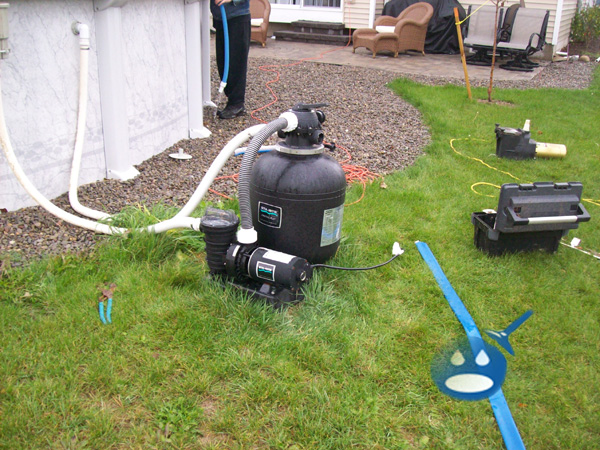Today we’re likely to speak about how a pool area filter system works. There is a pump timer, a swimming pool pump along with a filter. We’ll discuss the use of the pump, the filter, the plumbing and just how all of this works together.
Water travels from the pool to the pump. Water comes in through two pipes. One comes from the pool skimmer and the other comes from the primary drains at the bottom of the pool. The water is pulled into the pump around the suction side. Just before entering the pump the water moves by way of a basket called a strainer pot. The basket is a secondary means for filtering the water to avoid debris from getting into the pump chamber where the impeller spins. The water leaves the pump on the discharge side or “pressure side” of the plumbing. The water is pressed from the pump into the filter. The filter serves to get rid of dirt and debris from the water. The water that is clean then leaves the filter and, sometimes, passes through a chlorinator and back to the pool. It is best to chlorinate the water after it leaves the filter so that less chlorine goes into the pump and filter which can be harmful to the equipment.
There are three popular types of filters. One is a sand filter. The sand collects and traps debris. To release the debris the sand filter needs to be backwashed. Another filter is a cartridge filter. They have a greater surface area and are reduced maintenance. One or two times per season a cartridge filter must be hosed off and cleaned. The last type of a filter is a DE or diatomaceous earth filter. DE is a fine powder that coats the grids of the filter housing. DE filters are the best for trapping the smallest of debris. DE filters must also be backwashed occasionally and the DE power needs to be replaced with each backwash.
Backwashing a filter is the simple procedure for running the filter in reverse and flushing the filter of debris. You know it is time to backwash when the pressure in the filter rises above 20 psi. This means there is an excessive amount of debris in the filter and water is struggling to go through the system. If back-washing doesn't work or pressure increases rapidly it may be because the pool has a lot of debris or the filter needs to be manually cleaned.
Sometimes after your pump continues to be off for a long time of your time it can be hard to re-prime it. This is because all the water has drained from the filter and the plumbing. To facilitate priming, completely close the main drain valve. Fully open the skimmer valve. Place the filter valve in the circulate position. Then turn the system on. This will isolate the filter from the circuit thereby asking the pump only to prime the plumbing. In seconds you should have a full and constant water flow through the pump. Once this has been established, quickly shut off the pump. Move the filter valve into the filter position and restart the pump. The prime continues and fill the filter. Don’t forget to bleed the air from your filter when prime is established.
Click here for more week pool serivce by Gilbert Aquanuts.

No comments:
Post a Comment